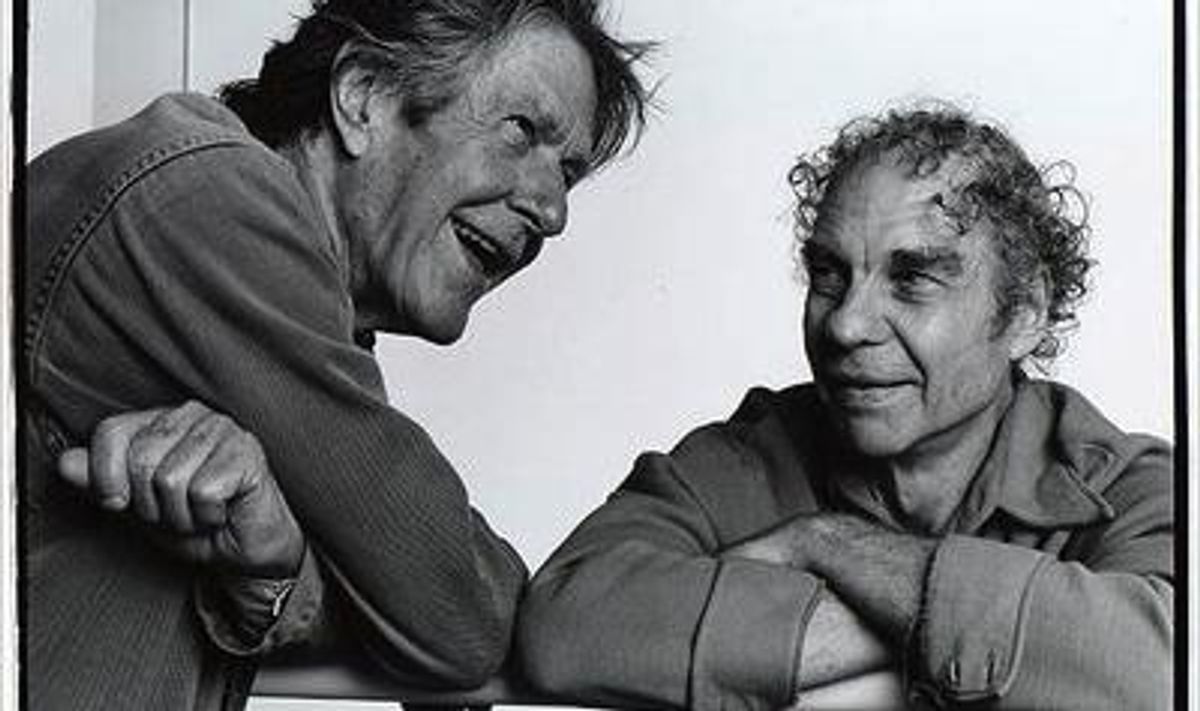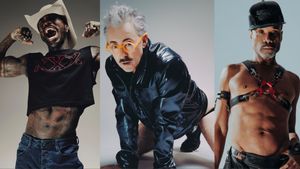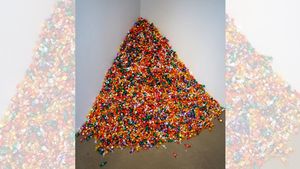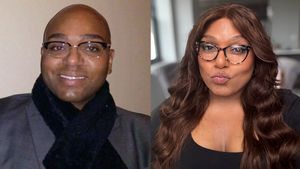Composer John Cage (1912-92) and the choreographer Merce Cunningham (1919-2009) affected 20th century culture in more ways than we probably realize. The creative and romantic partners straddled generations when most men were closeted (even when everyone knew they were gay) and yet their legacy continues to reverberate after they have both died.
Most recently Mikhail Baryshnikov, the founder and artistic director of the Baryshnikov Arts Center, is opening a campaign to raise $1 million for artistic fellowships named in their honor--partly due to the dancer and choreographer's own collaborations with Cunningham late in his career. Although Baryshnikov is decidedly straight, that doesn't keep him from embracing queer creatives in dramatic ways. But many may not even be that aware of who Cage and Cunningham were in their lifetimes.
John Cage first met Merce Cunningham in 1938 at the Cornish School in Seattle. At the time Cage was married to a woman and the couple allegedly had an open relationship and they were both attracted to the younger male dancer. Cage soon realized he was more attracted to Cunningham than to his wife Xenia and the two soon moved together to New York City. Their first collaboration together was "Credo in Us" in 1942.
In 1943, Cage composed "Amores" and admitted that its theme "concerned the quietness between lovers." It was, he wrote, "an attempt to express in combination the erotic and the tranquil, two of the permanent emotions of Indian tradition." Scholar and curator Jonathan Katz notes that "many of these later 'expressively' titled pieces were moreover written to correspond with dances by Merce Cunningham only reinforces the point."
Katz has made the point in "John Cage's Queer Silence or How to Avoid Making Matters Worse" that "John Cage never did quite come out of the closet." But he goes on to state:
"Nonetheless, nearly everybody in the art world who knew him knew of his lifelong relationship with Merce Cunningham, and some even about the other men in his life. His sexuality was a kind of open secret within the avant-garde, and, as his fame spread, so too did knowledge of his personal life. Still, direct public acknowledgement of Cage's sexuality was, until quite recently, hard to find, consigned to the realm of gossip and understood to be tangential to his historical import and achievements. Cage himself, while never denying his sexuality, preferred instead to duck the question: when asked to characterize his relationship with Merce, he would say, 'I cook and Merce does the dishes.' "
During the time when Abstract Expressionism--a macho and homophobic artistic group for the most part--reigned supreme in New York City, Cunningham and Cage were also close to Jasper Johns and Robert Rauschenberg (also a couple, although they had a notorious split and Johns has never openly discussed the relationship).
I had the unusual pleasure of meeting Merce Cunningham only briefly. It was during a April 2009 gala/party thrown in honor of his 90th birthday at BAM after the performance that perplexed and pleased me in ways that I'm still figuring out all these years later. I later saw the Legacy Tour performance on New Year's Eve 2011, years after he had passed away and his dancers were preparing to disband. While both men led complicated, creative lives, hopefully we can celebrate the imagination that went into their collaborations--experimenting with romance as well as creation of choreography and sound.




















































































